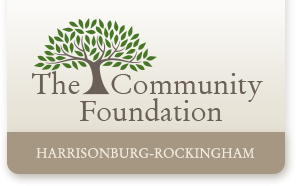Five of 2022’s most-asked questions about Qualified Charitable Distributions
Five of 2022’s most-asked questions about Qualified Charitable Distributions

Qualified Charitable Distributions, or “QCDs,” are becoming a very popular financial and charitable planning tool. At the same time, QCDs are growing as the source of more and more confusion.
Here are answers to the questions most frequently asked this year by both advisors and donors. Be on the lookout for these and other client questions, and please do not hesitate to reach out to The Community Foundation for assistance.
“Is an IRA (Individual Retirement Account) the only eligible source for Qualified Charitable Distributions?”
Short answer: Almost.
Long answer: An individual can make a Qualified Charitable Distribution directly to an eligible charity from a traditional IRA or an inherited IRA. If the individual’s employer is no longer contributing to a Simplified Employee Pension (SEP) plan or a Savings Incentive Match Plan for Employees (SIMPLE) IRA, the individual may use those accounts as well. In theory, a Roth IRA could be used to make a QCD, but it is rarely advantageous to do that because Roth IRA distributions are already tax-free.
“What is the difference between a QCD and an RMD?”
Short answer: Quite a bit! But a QCD can count toward an RMD.
Long answer: Everyone must start taking Required Minimum Distributions (“RMDs”) from their qualified retirement plans, including IRAs, when they reach the age of 72. RMDs are taxable income. The Qualified Charitable Distribution, by contrast, is a distribution directly from certain types of qualified retirement plans (such as IRAs) to certain types of charities. When a taxpayer follows the rules, a QCD can count toward the taxpayer’s RMD for that year. And because the QCD goes directly to charity, the taxpayer is not taxed on that distribution.
“Can I make a Qualified Charitable Distribution even if I am not yet required to take Required Minimum Distributions?”
Short answer: Yes–within a very narrow age window.
Long answer: RMDs and QCDs are both distributions that impact retirement-age taxpayers, and it would seem logical that the age thresholds would be the same. Under the SECURE Act, though, the required date for starting RMDs was shifted from 70 ½ to 72 (which is better for taxpayers who want to delay taxable income). A corresponding shift was not made to the eligible age for executing QCDs; that age is still 70 ½ (which benefits taxpayers who wish to access IRA funds to make charitable gifts even before they are required to take RMDs).
The IRS’s rules for QCDs are captured in Internal Revenue Code Section 408 and summarized on pages 14 and 15 in Publication 590-B in its FAQs publication.
“Can I direct a QCD to my fund at The Community Foundation?”
Short answer: Yes, if it’s a qualifying fund.
Long answer: While donor-advised funds are not eligible recipients of Qualified Charitable Distributions, other types of funds at The Community Foundation can receive QCDs. These funds include designated funds, unrestricted funds, field-of-interest funds, and scholarship funds.
“How much can I give through a QCD?”
Short answer: $100,000 per year.
Long answer: A Qualified Charitable Distribution permits you (and your spouse from your spouse’s own IRA or IRAs) to transfer up to $100,000 each year from an IRA (or multiple IRAs) to a qualified charity. So, as a married couple, you and your spouse may be eligible to direct up to a total of $200,000 per year to charity from your IRAs and avoid significant income tax liability.
Questions? Call us at 540-432-3863 or email Kristin Coleman at [email protected].



